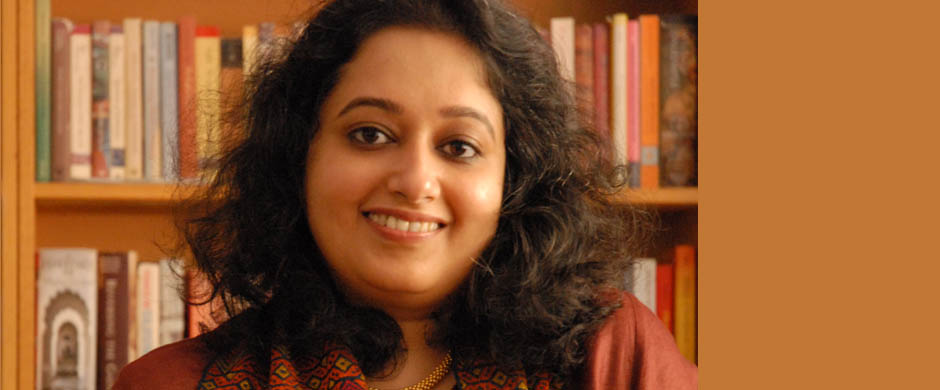As an art historian of early modern South Asia, my research and teaching integrate Indian Ocean and Eurasian geographies and engage longue durée perspectives—from the medieval to the modern. Interdisciplinary training in art history, museum anthropology, and architecture defines my critical and pedagogical practice. Along with specializing in painted artifacts and early modern architecture, centered and radiating out of western India’s regions of Rajasthan and Gujarat, I have published on colonial taste and nineteenth-century design and contributed to policy reports on contemporary heritage landscapes. My regions have afforded me vantage points of kings and peoples on centralizing empires—colonial and precolonial—while also offering a milieu of mercantile communities, Hindu, Muslim, and Jain religious formations, as well as itinerant artists, poets, and scribes who refracted forms and ideas across genres and spaces. In an era of rising ethno- and religious-nationalisms and deepening boundaries—within the region I study and that where I educate—I foreground art history’s (re)making of colonized and racialized pasts and presents.
My book, The Place of Many Moods: Udaipur’s Painted Lands and India’s Eighteenth Century, recognized by the 2019 Edward Cameron Dimock, Jr. Prize (American Institute of Indian Studies), is the first to use wide-ranging artistic representations of place to trace the major aesthetic, intellectual, and political shifts in India’s long eighteenth century. I argue for new methodological grounds by tracking the intersections between moods, material culture, physical environments, historical memory, and territorial claims. Udaipur’s artists and artworks reveal powerfully immersive and politically contingent conceptions of a place’s moods—that enable revising histories of epistemic cultures at the interstices of the early modern world and the emergent colonial space in nineteenth-century India. Beyond the intimacy of the story of a city, a region, or a subfield, The Place of Many Moods raises questions about how emotions, aesthetics, and artifacts operate in constituting history and subjectivity, politics and place.
My contributions in curatorial roles in India and the US have led to collaborations on conservation projects and digital initiatives.
I am currently writing and co-editing the catalogue that will accompany my co-curated exhibition, provisionally titled, A Splendid Land: Paintings from Royal Udaipur, India. Organized by the Freer and Arthur M. Sackler Gallery of Art, Smithsonian’s National Museum for Asian Art in partnership with the City Palace Museum, Udaipur, this exhibition will open in November 2022 at Washington DC. It will highlight experiential and multisensory aspects of court paintings dated between 1700 and 1900—as both the theme of the artworks and the means of exhibiting them—to display their emotional registers, ecological relevance, and aesthetic idealizations. Given the world’s familiarity with Rajasthan, we expect the show to attract a sizable non-academic audience that will find untold stories and contemporary valences beyond stereotyped images of Oriental decadence.
My article, “Arrivals at Distant Lands: Artful Letters and Entangled Mobilities in the Indian Ocean Littoral,” introduces a new book project, Letters from the Local Bazaar: Unfurling Scrolls of Mobility and Scraps of Time in the Global Eras of Art History.While Europe’s preeminence in discussions of globalism and mobility has been challenged, the crisscrossing of distinct scales and modes of traveling have been less considered. My new project follows messengers, monks, and merchants who walked with their bundled, letter-scrolls, arriving at flourishing local bazaars of inland towns and port cities across northern, western, and eastern India.
The website of The Place of Many Moods includes the digital composite of a seventy two-foot long painted letter in the collection of Abhay Jain Granthalya, Bikaner—made available for digital scrolling and wider research for the first time. I am currently collating a repository of many such scraps and scrolls spread across numerous libraries and religious centers. It has led me to consider how digital art history and network bandwidth enable, demand, and restrict collaborations. How do we access localized material perspectives and acknowledge disparate intellectual labor to constitute art history’s temporal, geographical, and critical frameworks?
Another related project, a coedited issue for Journal18 (forthcoming in Fall 2021), takes off from the ubiquity of the phrase “the long eighteenth century” to explore from which vantage points, whether local, regional, or transregional, and for whom, is the eighteenth century long. When the focus on histories of colonialism and slavery forces us to look anew at the bodies, lands, and knowledge presented in art, how does our thinking about the relative length or shortness, narrowness or breadth, of the eighteenth century change?
I am a collaborator with Global Horizons in Pre-Modern Art, an international initiative funded by the European Research Council through the University of Bern (2018-2023). I have held fellowships at the Center for Advanced Study in the Visual Arts (CASVA), Forum Transregionale Studien, Berlin, American Institute of Indian Studies, Metropolitan Museum of Art, Yale Center For British Art, and Paul Mellon Center for British Art.





